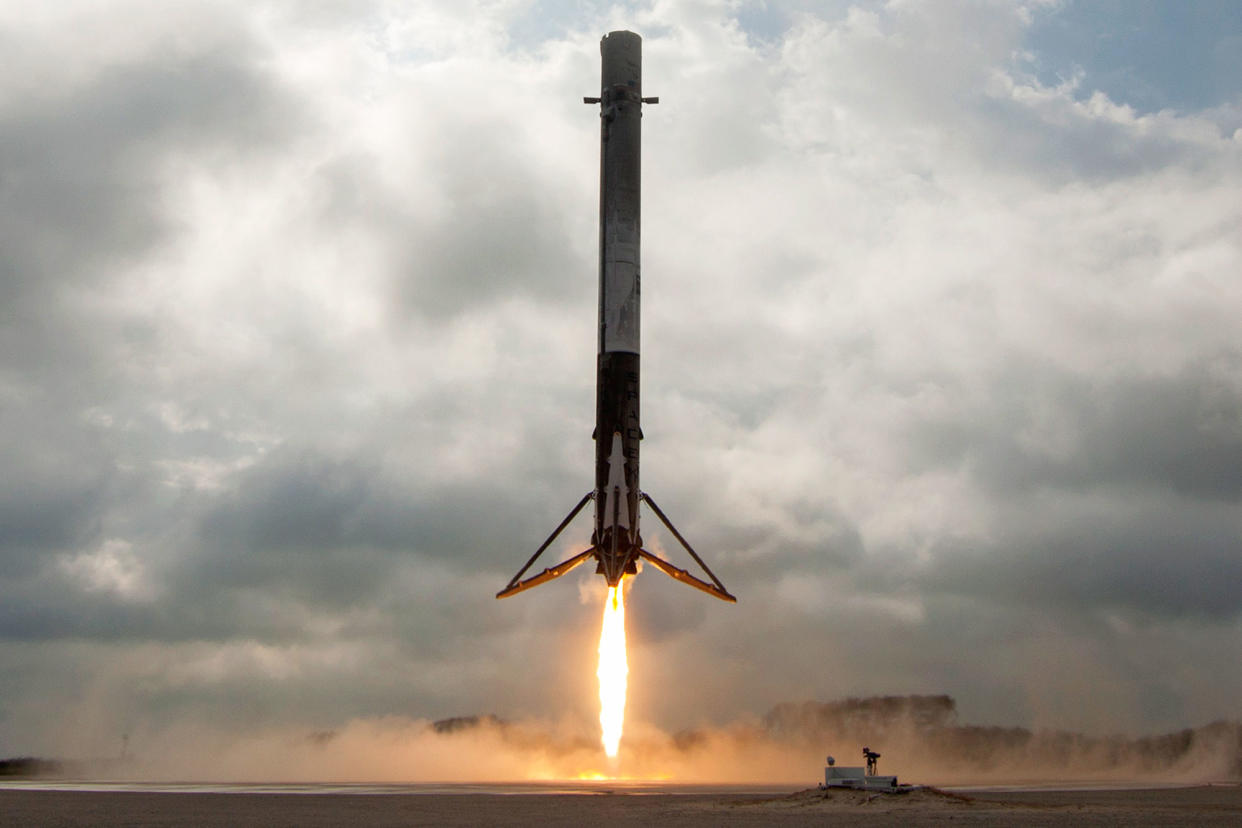‘Baby Came Back!’ SpaceX’s Rocket Safely Returns to Earth in Launch Pad Landing on Historic Site

Rocket launches are always cool to watch. But rocket landings? Now that’s truly out of this world.
On Sunday, private space company SpaceX successfully launched its Falcon 9 rocket from the Kennedy Space Center in Florida. After sending a cargo spacecraft packed with 5,500 pounds of supplies to the International Space Station, the Falcon 9 returned to earth — and cameras where there to capture its awe-inspiring descent and subsequent landing.
The video, captured by drones and posted to SpaceX’s official YouTube page, shows the rocket gracefully emerging through the clouds — slowing down just in time to gently land in the center of its launch pad.
It’s a perfect compliment to video shared earlier by Space.com, which included live footage of the landing from cameras placed on the rocket itself. (The cheers of the SpaceX team in the room really turn the emotion of the situation up a notch).
This is the first time SpaceX has ever landed a rocket on land. The program had successfully staged rocket landings five other times before, but on sea platforms.
SpaceX CEO Elon Musk also shared zoomed-in video of the landing to his Instagram page, captioning a still of the descending rocket, “Baby came back.”
While Falcon 9’s mission wasn’t particularly historic, the location of its launch sure was.
It’s the same pad – Launch Complex 39A — that NASA used during three decades of the space shuttle program, including the historic 1969 Apollo 11 missions which sent the first humans to the moon.
Falcon 9’s launch Sunday was the first time the pad had been used since the space shuttle program ended in 2011.
SpaceX has released videos of landings in the past — including 360-degree view shots and other onboard cameras.
Falcon 9 was originally scheduled to launch on Saturday. That launch was scrapped just 13 seconds before liftoff over concerns of an anomaly discovered in the rocket’s steering system.

